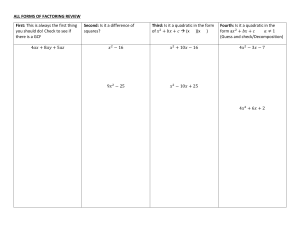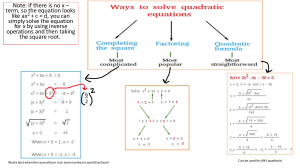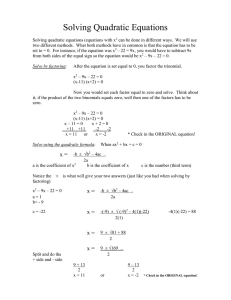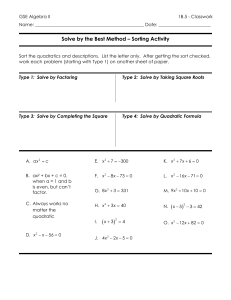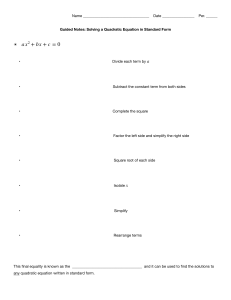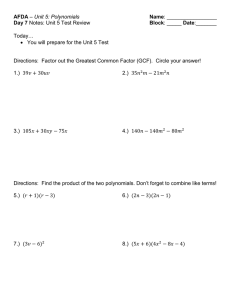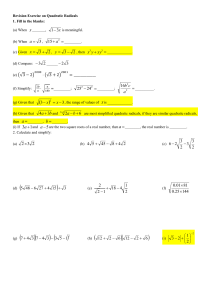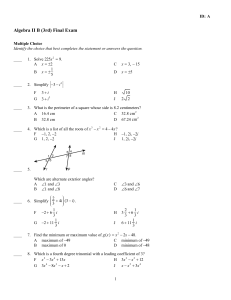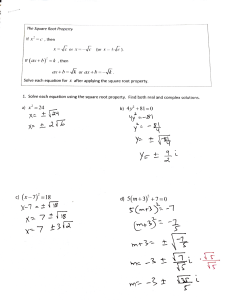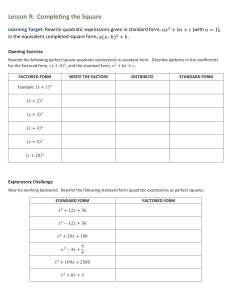How to Solve Quadratic Equations: 0 ax bx c + + =
advertisement
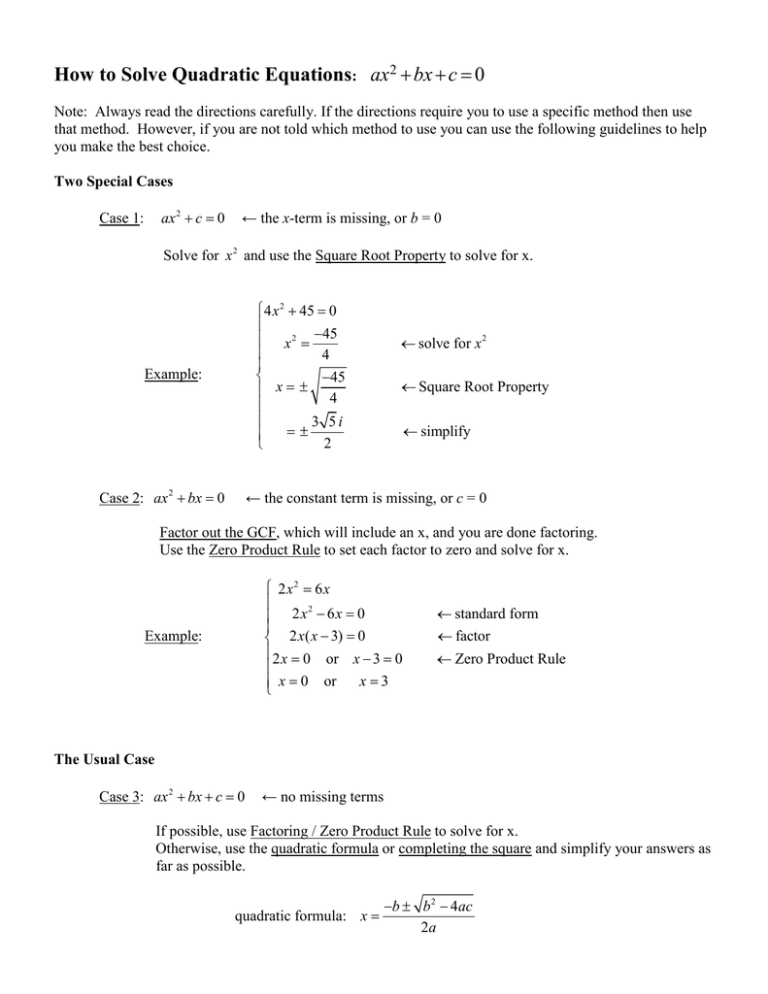
How to Solve Quadratic Equations: ax2 + bx + c = 0 Note: Always read the directions carefully. If the directions require you to use a specific method then use that method. However, if you are not told which method to use you can use the following guidelines to help you make the best choice. Two Special Cases ax 2 + c = 0 Case 1: ← the x-term is missing, or b = 0 Solve for x 2 and use the Square Root Property to solve for x. 4 x 2 + 45 = 0 x 2 = −45 4 −45 x= ± 4 3 5i =± 2 Example: Case 2: ax 2 + bx = 0 ← solve for x 2 ← Square Root Property ← simplify ← the constant term is missing, or c = 0 Factor out the GCF, which will include an x, and you are done factoring. Use the Zero Product Rule to set each factor to zero and solve for x. 2 x2 = 6 x 2 2x − 6x = 0 2 x( x − 3) = 0 2 x = 0 or x − 3 = 0 x=3 x = 0 or Example: ← standard form ← factor ← Zero Product Rule The Usual Case Case 3: ax 2 + bx + c = 0 ← no missing terms If possible, use Factoring / Zero Product Rule to solve for x. Otherwise, use the quadratic formula or completing the square and simplify your answers as far as possible. quadratic formula: x = −b ± b 2 − 4ac 2a
